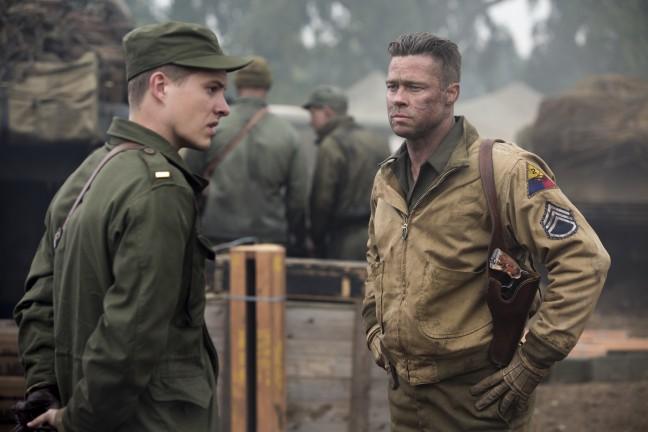David Ayer’s “Fury” does not live up to its great potential as an epic World War II film. While its burnt-out characters and exhausting string of events maintain an edge-of-your-seat suspense throughout the entire film, the suspense is only met with disappointment.
Set in April 1945, this-coming-of-age-in-a-war-setting narrative follows Norman (Logan Lerman, “Noah”), a previous army typist who has recently been assigned to join the crew of a tank called Fury. The film’s focus on tank warfare offers a unique perspective on the abilities and disabilities of such a machine. The film opens with a brief description of the outmatched technology of American tanks to the much more developed and powerful German tanks.
Brad Pitt (“The Counselor”) brings nothing new to the table as Sergeant Don “Wardaddy” Collier, the leader of the worn-out and rugged Fury family. His cocky, macho attitude is all too similar to his role as Lieutenant Aldo Raine in Quentin Tarantino’s “Inglourious Basterds.” The film also stars Michael Peña (“American Hustle”) as Trini ‘Gordo’ Garcia, Jon Bernthal (“Grudge Match”) as Grady Davis and Shia LaBeouf (“Nymphomaniac”) as Boyd “Bible” Swan, whose nickname represents his overt religious views that conflict with the war setting he’s placed in.
In the film’s initial setup, Don invites the young Norman to his team and gives him responsibility of cleaning up the body parts left behind by the man who had previously held Norman’s position. Grady welcomes Norman with the appropriate line, “Just wait till you see what a man can do to another man.”
Religion and morality remain constant conflicts between the men and their positions as soldiers. They repeatedly and sarcastically proclaim that being a soldier is “the best job I ever had.” While Norman’s personal opinions on religion and morality are what initially separate him from his Fury brothers, his encounter with a German woman changes his perceptions of what is right and wrong. As a result, Norman and his comrades’ experiences also force the audience to question their own perceptions of morality. Though touching, the storyline is not strong enough to make a significant impact on its viewers.
“Fury” follows the team as they cross the German countryside to meet their company in Berlin. Throughout their journey, they encounter displaced German citizens, the SS, child soldiers and short-lived lust. Cinematographer Roman Vasyanov and his team elegantly portray the feeling of absolute destruction. While the film’s palette mostly consists of the cool blues and grays of death and destruction, the contrast of the ever-present red blood of war makes every drop all the more emotionally and aesthetically moving. In addition, the camera builds a strong emotional bond between the audience and Pitt’s character. As outsiders, we’re able to witness the outwardly stone-faced sergeant’s emotional vulnerability that he hides from his Fury family. Despite this, the closing credit montage brings more emotion to “Fury” than the script does.
Lerman’s performance and Vasyanov’s outstanding cinematography are what make “Fury” worth seeing. Outside of these two exceptional attributes, the film revels in the generic with boring, archetypal characters and a cut-and-dry screenplay. For a film that seems designed to win Oscars, “Fury” plays it safe and, in the process, loses many of the characteristics that could have made it a great war film.
3.4/5
https://www.youtube.com/watch?v=-OGvZoIrXpg


